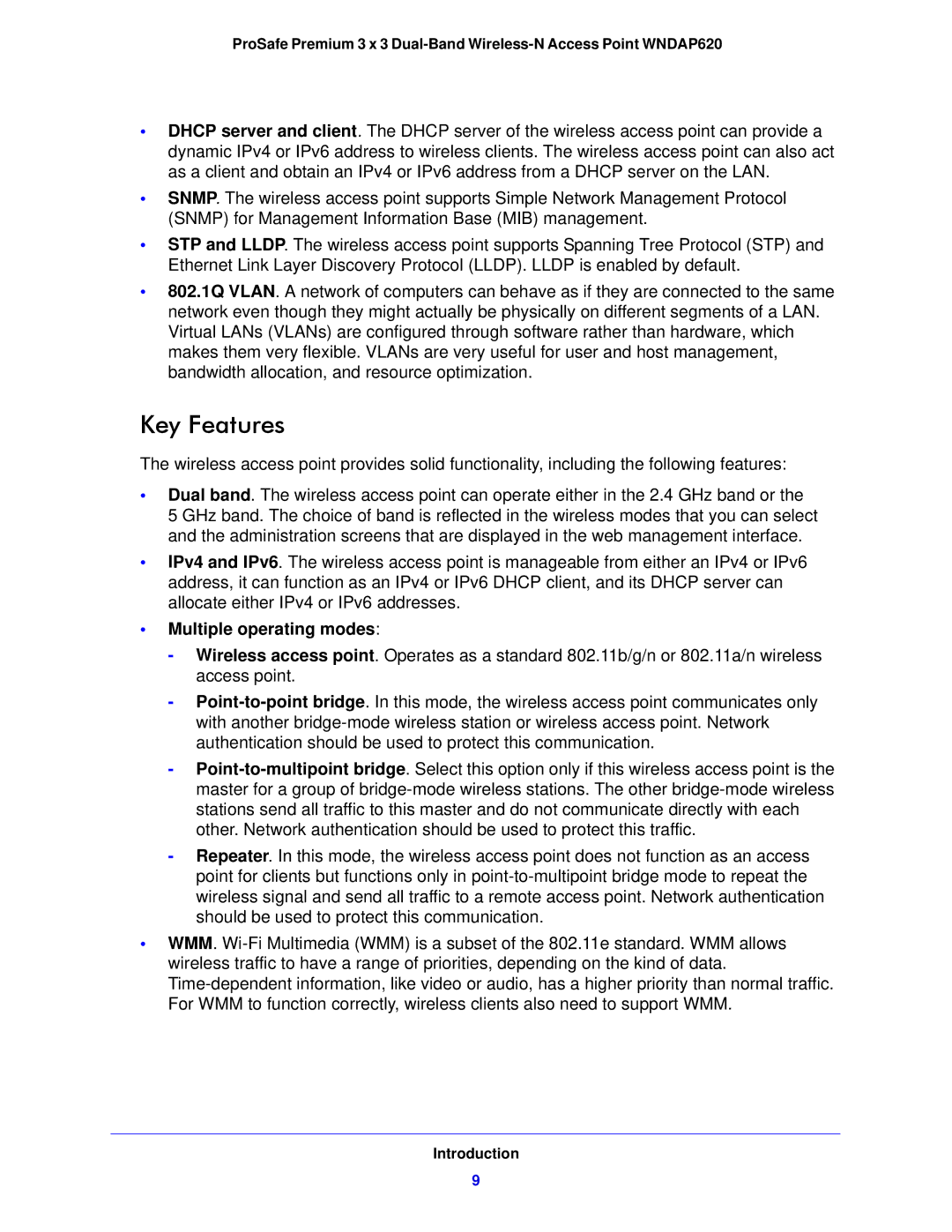ProSafe Premium 3 x 3
•DHCP server and client. The DHCP server of the wireless access point can provide a dynamic IPv4 or IPv6 address to wireless clients. The wireless access point can also act as a client and obtain an IPv4 or IPv6 address from a DHCP server on the LAN.
•SNMP. The wireless access point supports Simple Network Management Protocol (SNMP) for Management Information Base (MIB) management.
•STP and LLDP. The wireless access point supports Spanning Tree Protocol (STP) and Ethernet Link Layer Discovery Protocol (LLDP). LLDP is enabled by default.
•802.1Q VLAN. A network of computers can behave as if they are connected to the same network even though they might actually be physically on different segments of a LAN. Virtual LANs (VLANs) are configured through software rather than hardware, which makes them very flexible. VLANs are very useful for user and host management, bandwidth allocation, and resource optimization.
Key Features
The wireless access point provides solid functionality, including the following features:
•Dual band. The wireless access point can operate either in the 2.4 GHz band or the
5 GHz band. The choice of band is reflected in the wireless modes that you can select and the administration screens that are displayed in the web management interface.
•IPv4 and IPv6. The wireless access point is manageable from either an IPv4 or IPv6 address, it can function as an IPv4 or IPv6 DHCP client, and its DHCP server can allocate either IPv4 or IPv6 addresses.
•Multiple operating modes:
-Wireless access point. Operates as a standard 802.11b/g/n or 802.11a/n wireless access point.
-
-
-Repeater. In this mode, the wireless access point does not function as an access point for clients but functions only in
•WMM.
Introduction
9
